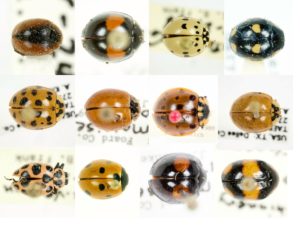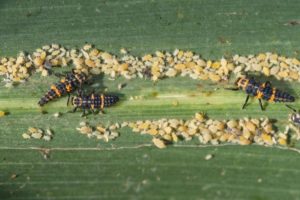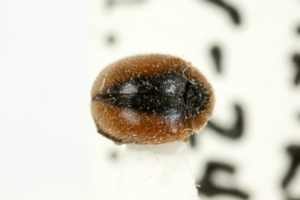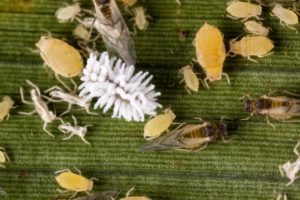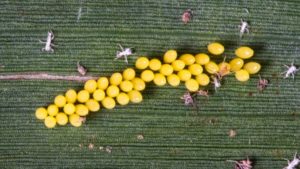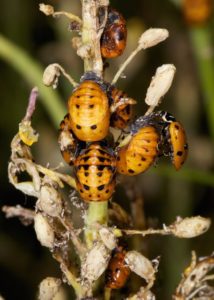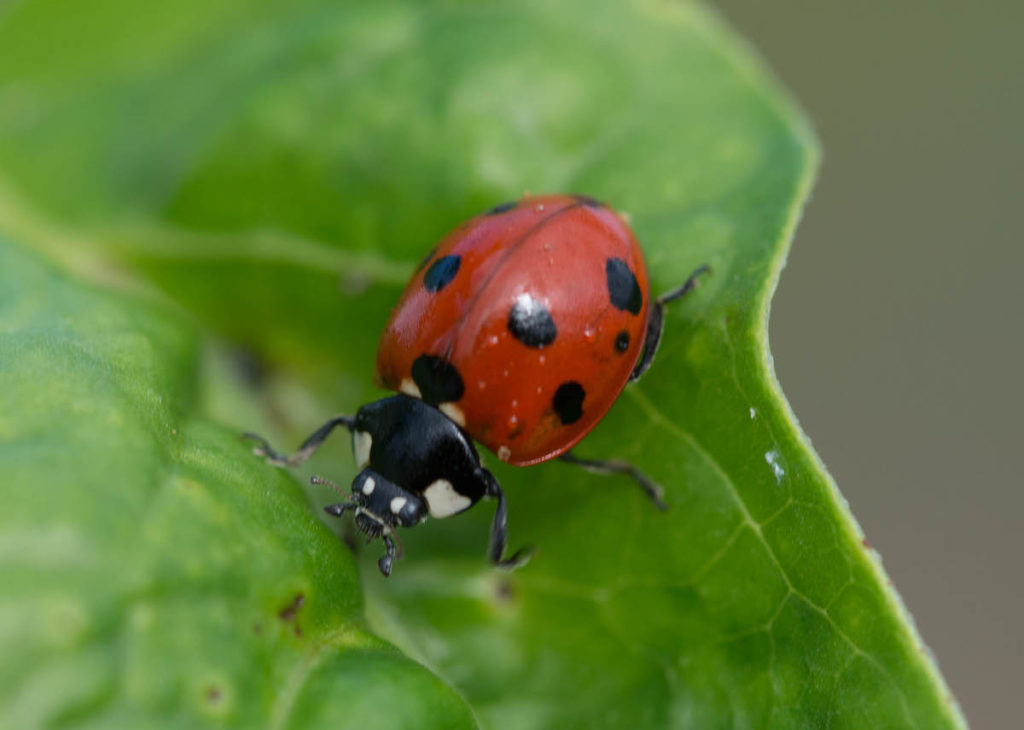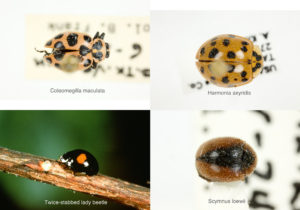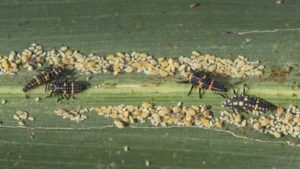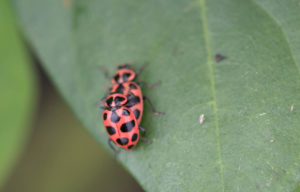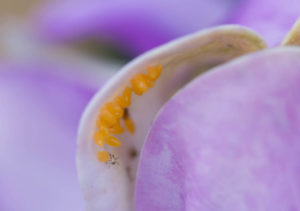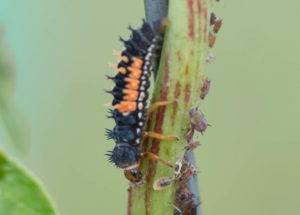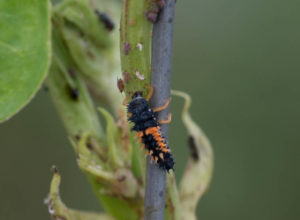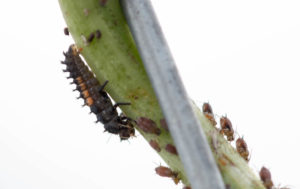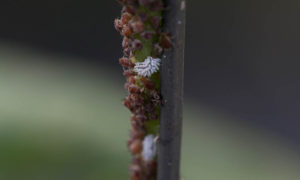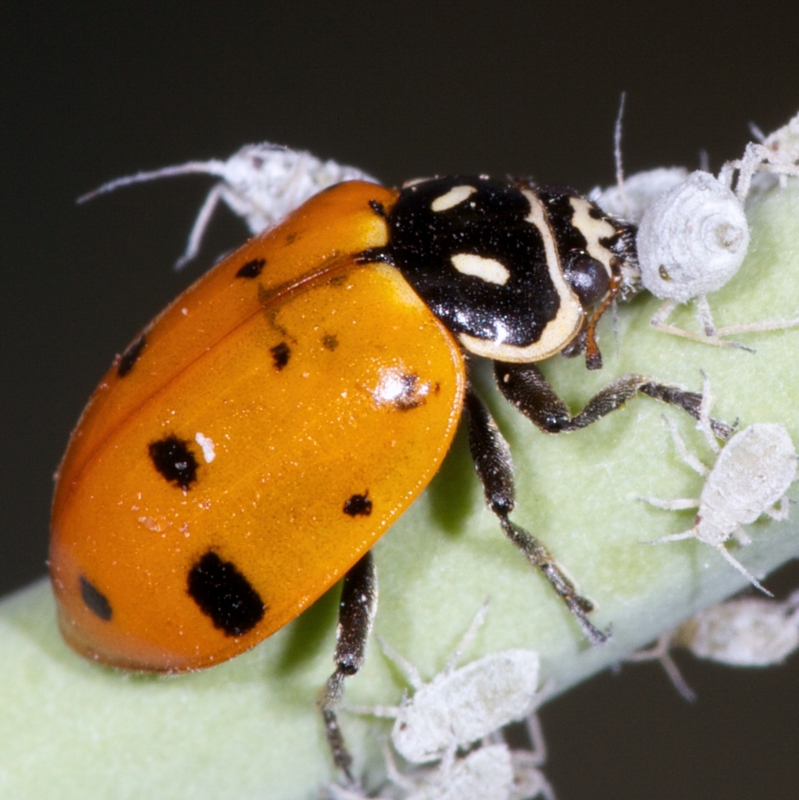
Adult lady beetle eating aphids.
Most recently reviewed by: Dalton Ludwick & Extension Entomologist at Weslaco (Vacant) (2020)
Common Name(s): Lady Beetle, Lady Bug
Description
All lady beetles belong to the family Coccinellidae in the insect order Coleoptera. There are five subfamilies in this family, and four of them are what we think of as traditional lady beetles that eat other insects. One subfamily, however, is comprised of plant-eating insects. As adults they are all oval in shape, and the outer pair of wings is hardened, dome-like and shiny. There is a huge amount of difference in coloration and markings among species.
Both adults and larvae are predatory on other insects, and the larvae look well adapted indeed. They have large mandibles with which to suck juices from their prey, and some people describe them as looking like little alligators.
Origin and Distribution
Lady beetles are found worldwide and there are more than 450 species in the US. However, not all are native; some have been accidentally introduced here and some have been deliberately introduced in an effort at using them to control pest insects (biological control). Perhaps the best known modern introduction is Harmonia axyridis, the multicolored Asian lady beetle. Since its introduction more than 30 years ago it has spread across much of the country and is somewhat effective at controlling aphid populations. However, it builds up in large numbers and invades homes in the fall when the insects look for warm places to overwinter. In this case this beneficial insect becomes a pest.
- Lady beetle larvae eating aphids
- Young lady beetle larva
Habitat & Hosts
Lady beetles overwinter as adults in sheltered locations. Often they congregate together for overwintering, and these aggregations break up in the spring as plants begin to green up and are first infested with aphids and other insects. These insects serve as an early season food source for lady beetles. Both larvae and adults are predatory on other insects. Populations of lady beetles continue to build up over the course of the summer so long as there are other insects in the system that can serve as their food sources. Aphids are one preferred food of lady beetles, and in agricultural production there are many times when lady beetles can keep an aphid infestation under control. Other food hosts include scales, spider mites and various other soft-bodied insects or arthropods. Some lady beetle species prefer a specific type of insect, like aphids, while other species are more generalist feeders and eat lots of different things including insect eggs. Lady beetles can also eat pollen and nectar, and it is not uncommon to find them at flowers.
- Scymnus lady beetle adult.
- Scymnus lady beetle larvae eating aphids.
- Coccinella septempunctata lady beetle
Life Cycle
Like all beetles, lady beetles have an egg stage, a larval stage that goes through several instars as it grows (usually 4), a pupal stage and an adult stage. Eggs are usually laid near food sources for the young larvae, and they are usually deposited in small clusters. Larval development takes a month or so and then the last stage larva enters the pupal stage. Pupae are often found attached to plant parts, and they remain in place for the time it takes them to become adults. Adults then emerge from the pupae, mate, and females begin laying eggs.
- Lady beetle eggs.
- Lady beetle pupae
Management
If you live in the State of Texas, contact your local county agent or entomologist for management information. If you live outside of Texas, contact your local extension for management options.Lady beetles are important predators of other insects and are considered to be very valuable beneficial insects. In cases where they get indoors in high numbers in the fall, hand removal is possible, or use a vacuum cleaner or broom.
